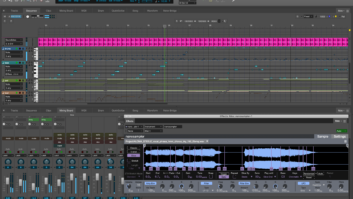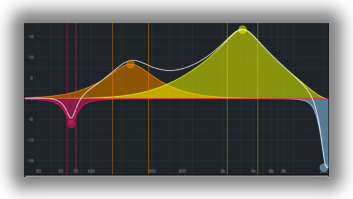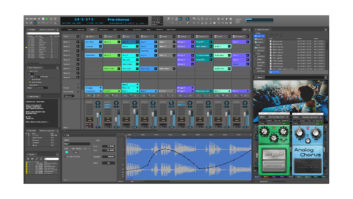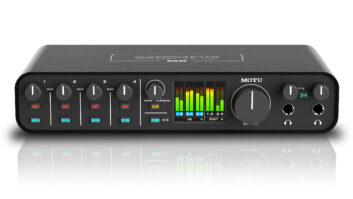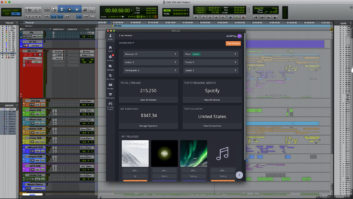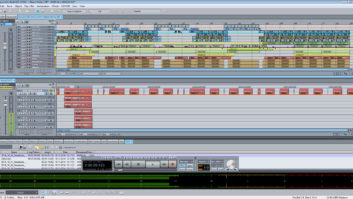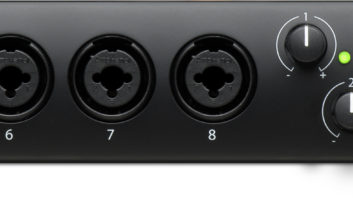Have you ever wished for a way to record takes without cluttering up your hard drive with files? Many of today’s best digital audio sequencers have some sort of “take” function that lets you record multiple passes on one track without erasing the previous passes by saving each one as a layer for that track. (The layers are often referred to as virtual tracks.) However, once you decide on the take that you want to keep, all of the other unused takes are still eating up hard drive space.
Some programs can perform a special “save as” and create a duplicate project folder that contains only the used audio files. However, if you’re running low on hard drive space and the project is really big, then this may not be a viable option. The alternative is to go into the project’s Audio Files folder and erase the unused files. But this can be a dangerous operation, opening yourself up to the possibility that you might accidentally delete something crucial.
Polar is a feature in Digital Performer that solves this problem. It’s a RAM-based loop recording tool first introduced in Digital Performer Version 2.6. Given its own dedicated window and unique modular appearance (similar to a plug-in), its controls are very easy to learn. Using Polar, you can quickly record a bunch of loops into your computer’s RAM and then save just the “keepers” to your hard drive. Playback follows Digital Performer’s main transport so that you can jam along with the session’s tracks as you record.
FAST AND FURIOUS
To get the most recording time possible when working in Polar, your computer should be loaded with as much RAM as it can hold. Running Digital Performer on a minimum of system memory (by setting its memory allocation to a reasonable amount) and with a bare-bones system extension set also helps to free up RAM resources. Polar depends on the MAS engine, so I suggest running it with a MOTU audio interface (such as the 828 or 896 FireWire units) for best results.
Recording with Polar is relatively simple. Open Polar’s window and assign input record and output monitor sources. The input source can be mono or stereo, and there’s a level control for the output. Polar’s recording can be set to automatically start at sound input, or you can press its Record button to manually begin each new pass. In the Automatic mode, a gate lets you adjust for triggering sensitivity, and each new pass is automatically incremented. In the Manual mode, a pass is continually recorded (over and over, for a cumulative effect) until you press the New Pass button or stop recording. Loop duration is easily adjusted using the repeat bar lines, which become visible in the Tracks window when Memory Cycle is enabled.
With several passes recorded, you can write these to your hard drive by pressing Polar’s Print button. If the passes are short, then the process of writing them to your drive is almost immediate. You can choose to have the passes automatically added to your Tracks window, which is very convenient, or just put in the session’s Soundbites’ pool to drag into your arrangement later. Polar’s passes can be printed individually or comped together as a single take. (Each pass has its own level and pan, so you can get quality control of the mix.) There’s no need to decide right away which of the passes you want to print either, because you can save your entire Polar session as an independent file, and even open it in an entirely different Digital Performer session.
POLAR PATTERNS
Song sections are often looped while working parts out, and Polar is the perfect companion for this process. With my reference drum tracks laid down, I can loop a song’s section, open up Polar and start recording. It’s possible to work through each of the song’s sections, looping them as I go, while recording many different parts into a single Polar session. Because Polar’s input can be switched on-the-fly, I can have different instruments and mics set up and ready to grab. After recording all the parts that I can think of, I select the ones I like and print them. All that’s left then to complete the song’s initial tracks is to arrange the saved loops in the Tracks window.
A song section is usually composed of several musical loops, which are often of different lengths. Polar will let you create loops of different lengths (and even different meters, if you want) in the same session. The trick to getting Polar to record loops of different lengths is to use a different Group assignment for passes of different lengths. Group assignments can be created manually by entering the Group number you want for each new pass, or automatically by pressing the Auto-Increment Group key. When you are ready to record a pass of a new length, simply set the repeat bar lines for the new loop and press the New key. All the loops, regardless of their Group number (length or meter), play back continuously from end to end at the project’s master tempo.
Today’s crop of “do-it-all” digital audio sequencers is amazing, but sometimes their sheer power can confound our creative flow. There’s nothing quite like Polar; it’s only available in Digital Performer, and once you use it, it becomes obvious that it was created by recording musicians for recording musicians.
Visit Erik Hawkins’ fledgling record label atwww.muzicali.comand check out his new virtual studio recording book, Studio-In-a-Box (Artistpro/Hal Leonard).
